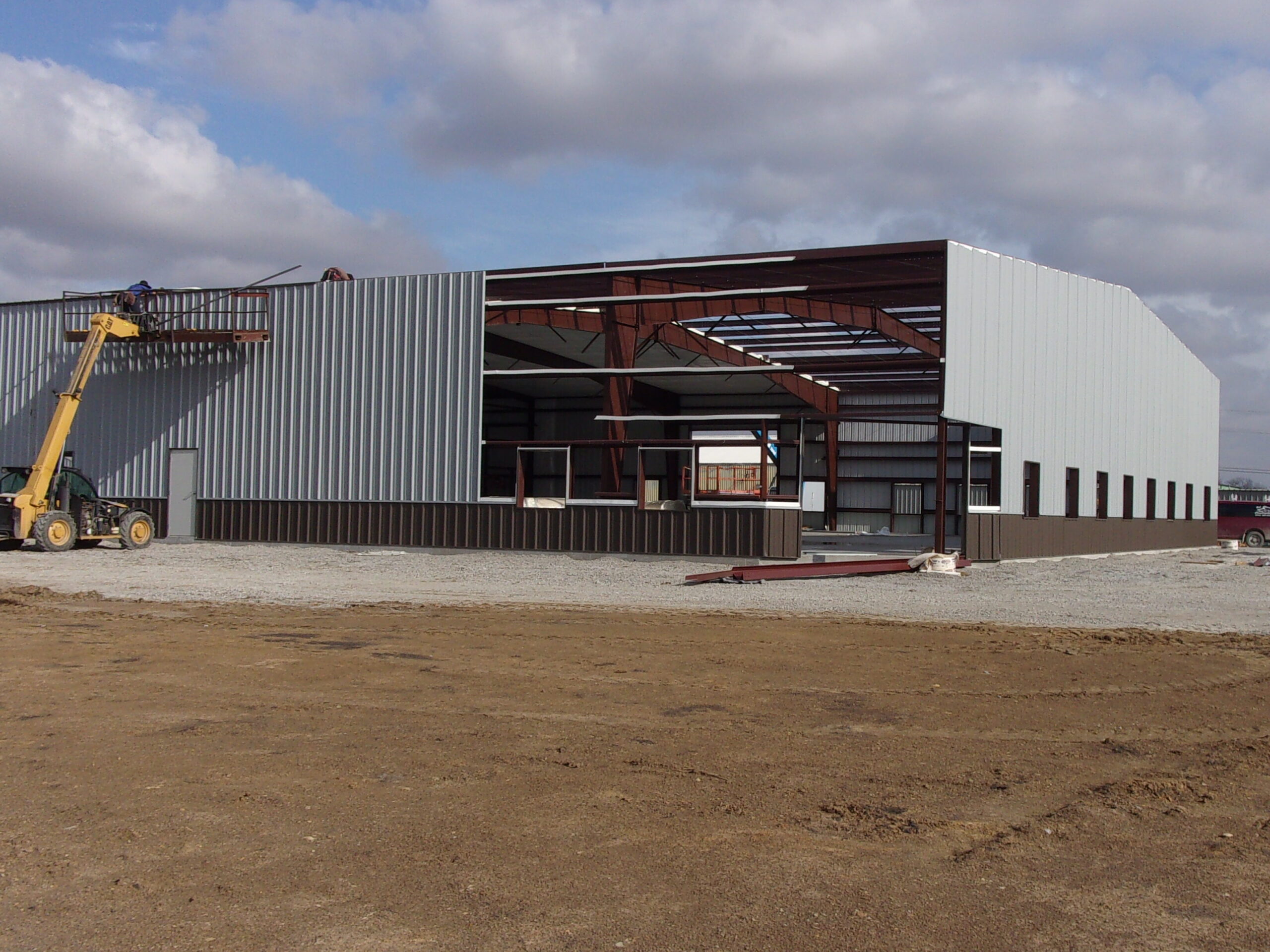At this time where environmental awareness is crucial and the globe tackles climate change and depleting resources, the pursuit of sustainable and eco-friendly building solutions is of paramount significance. Metal building construction has emerged, showcasing numerous environmental advantages that reach beyond their structural capabilities. Read on as we explore how steel buildings serve as a demonstration of responsible construction practices and a greener future for forthcoming generations, from energy efficiency and reduced carbon footprints to recyclability and innovative design possibilities.

Exploring the Environmental Excellence of Metal Buildings
Steel buildings transcend mere functionality, emerging as conscientious allies in our shared commitment to ecological well-being.
1. Energy Efficiency: Picture buildings not merely as static structures, but as dynamic entities that collaborate harmoniously with their surroundings. Metal buildings epitomize this synergy through their unwavering dedication to energy efficiency. Engineered with meticulous attention, these structures proactively mitigate energy wastage, exemplifying an equilibrium between interior comfort and minimized energy consumption. The consequential reduction in greenhouse gas emissions stands as a testament to their responsible environmental impact.
2. Recyclability Advantages: In an era where circular economies are heralded, metal buildings shine as prime exemplars of resource sustainability. Unlike conventional constructions that often culminate in resource-intensive demolitions, metal buildings adhere to a design philosophy that facilitates deconstruction and material reclamation. The recyclability of their constituent metals not only minimizes waste but also engenders a perpetual cycle of resource renewal, underscoring the intrinsic harmony between architectural innovation and environmental stewardship.
3. Mitigated Carbon Footprint: The carbon footprint of any endeavor is an indelible mark on our ecological landscape. Metal buildings, owing to their streamlined manufacturing processes and lightweight yet structurally robust composition, lay a softer imprint on the environment from inception. This virtuous cycle extends as these buildings persistently curtail energy demands during occupancy, crystallizing their role as catalysts for a reduced collective carbon footprint.
Metal buildings embody an intricate fusion of architectural elegance and ecological mindfulness.
Green Architecture: Unveiling Metal Buildings’ Role in Environmental Preservation
Let’s now turn our attention to the overarching concept of “green architecture.” This entails an intricate dance between human innovation and the preservation of our delicate ecosystem, and metal buildings play a starring role in this dynamic narrative.
Innovative Material Utilization:
At the heart of green architecture lies a commitment to responsible material utilization. Metal buildings shine in this aspect by leveraging the inherent advantages of metals like steel and aluminum. These materials are not only durable and long-lasting but also immensely recyclable, minimizing the depletion of natural resources. As green architecture advocates for materials that resonate with sustainability, metal emerges as a prime candidate that aligns with this vision.

Efficient Space Utilization:
Green architecture places emphasis on optimizing space while minimizing waste. Metal buildings embody this principle with their versatile design possibilities. The flexibility in construction and assembly allows for efficient space utilization, adapting to evolving needs without compromising on structural integrity. This adaptability not only conserves resources by avoiding unnecessary expansions but also contributes to reduced environmental disruption.
Holistic Environmental Integration:
A hallmark of green architecture is the seamless integration of structures with their surroundings. Metal buildings excel in this regard through innovative design features that blend aesthetics with ecological considerations. Large windows for ample natural lighting, rainwater harvesting systems, and incorporation of renewable energy sources are just a few ways these buildings harmonize with the environment. This integration not only reduces energy consumption but also enhances occupants’ well-being.
Advancing Architectural Paradigms:
Metal buildings stand as testament to how architectural innovation can be a catalyst for change. Their role in green architecture stretches beyond individual structures; they represent a paradigm shift in construction practices. By embracing energy efficiency, recyclability, and harmony with surroundings, metal buildings elevate the discourse around what buildings can be – not just functional spaces, but environmentally conscious statements.
Metal buildings serve as a strong testament to achieving a balanced coexistence. Exploring the environmental advantages of these structures reveals them not just as engineering marvels, but as catalysts for positive change. Their recyclable nature, energy efficiency, and contribution to green architecture redefine our approach to construction, promoting a future where progress aligns with ecological well-being. Contact our design team today for more information or to get started on your building project.
